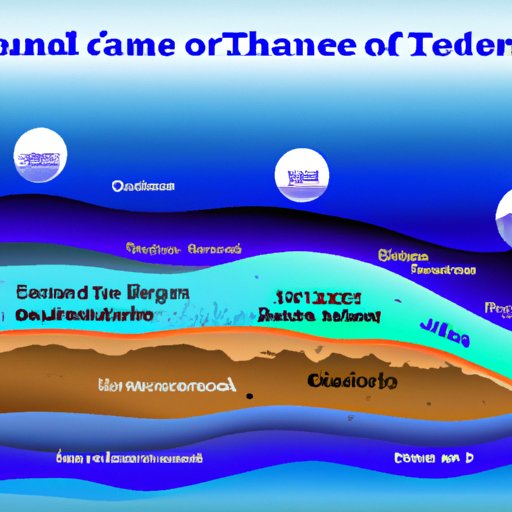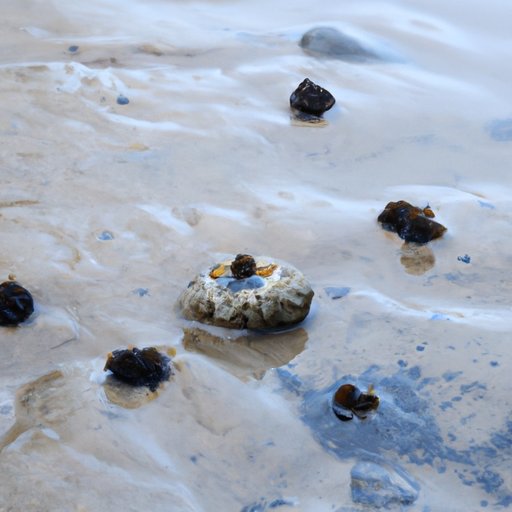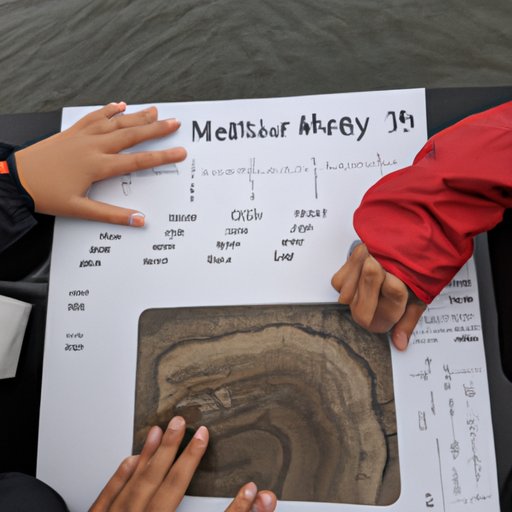Introduction
Tides are the rise and fall of sea levels caused by the combined effects of the gravitational forces exerted by the Moon and the Sun, and the rotation of the Earth. The science behind this phenomenon is complex, but understanding how tides work can help us better appreciate their influence on our oceans and the environment. This article explores the science and effects of tides, from the mechanics of tidal action to its impact on marine life and global climate.
Exploring the Science of Tides: How Does Tidal Action Work?
The motion of an ocean’s water is largely determined by two primary forces: gravity and the Coriolis force. Gravitational forces arise from the attraction between two bodies, such as the Earth and the Moon. The Coriolis force is a result of the Earth’s rotation, which affects the direction of oceanic currents. Together, these forces create the tidal bulge, or the periodic rise and fall of ocean levels.
Gravitational forces acting upon the Earth’s water are responsible for the creation of two tidal bulges – one on the side of the Earth facing the Moon, and the other on the opposite side. As the Moon orbits the Earth, these bulges move around the globe, creating the two daily high tide cycles that are observed in most parts of the world.
The Coriolis force also plays an important role in tides. This force causes the water to be deflected to the right in the Northern Hemisphere and to the left in the Southern Hemisphere, resulting in a circular pattern of ocean currents. These currents move both away from and towards the shore, contributing to the formation of the two daily high tide cycles.

An Overview of the Causes and Effects of Tides
The strength of the gravitational forces acting upon the Earth’s water, as well as the size and shape of the ocean basins, play a significant role in determining the magnitude of the tides. In addition, local weather conditions can also affect the height of the tides. For example, strong winds can cause the water level to rise or fall, resulting in unusually high or low tides.
Tides have a major impact on global climate, as they help regulate the temperature of the ocean waters. The rising and falling of the ocean’s surface also affects the distribution of nutrients in the water, which in turn impacts the growth of phytoplankton and other marine organisms. Tides also affect the migration patterns of many species of fish, birds, and other animals.
Investigating the Mechanics of Tides: How Do They Affect Our Oceans?
The movement of water due to tidal forces creates two distinct types of ocean currents: tidal currents and tidal ranges. Tidal currents are the steady flow of water in a particular direction, while tidal ranges refer to the difference between high and low tide levels. Both of these phenomena have a major impact on ocean circulation, as they help transport heat, nutrients, and sediment across the ocean.
Tidal currents can reach speeds of up to 5 knots (9 km/hr), making them one of the fastest-moving currents in the ocean. These currents can also create powerful waves, which can be hazardous to ships and other vessels. Additionally, tidal currents can also cause localized changes in water levels, resulting in areas of shallow water and rapid water flow.
Tidal ranges, on the other hand, refer to the difference between high and low tide levels. The magnitude of the tidal range depends on the position of the Moon and Sun relative to the Earth. In some places, the tidal range can be as much as 16 feet (4.9 meters). High tides bring more water into shallow bays and estuaries, while low tides expose large areas of the seafloor.

Understanding the Impact of Tides on Marine Life
Tides play an important role in the lives of many marine species, as they help determine when and where they migrate, breed, and spawn. Tides also affect the availability of food, as they bring nutrient-rich water closer to shore. This helps support the growth of phytoplankton and other small organisms, which in turn provide food for larger species.
In addition, tides can also influence the behavior of certain species. For example, some fish may use tidal currents to move between different habitats, while others may use the changing water levels to avoid predators. Tides also affect the migration patterns of many species of birds, as they rely on the tides to find food and safe places to rest.

Examining the Role of Tides in Our Weather Patterns
Tides can also have an effect on our weather patterns. The rise and fall of sea levels can increase the intensity of storms, as the increased water pressure can cause stronger winds and higher waves. Additionally, the movement of water due to tides can also contribute to coastal erosion, as it can wear away at the land over time.
Tides can also affect sea level, as the gravitational pull of the Moon and Sun can cause the ocean’s surface to rise and fall. Over time, this can cause the sea level to rise or fall, which can have a major impact on coastal communities. Additionally, the changing sea level can also impact the health of coral reefs, as they are sensitive to even small changes in water levels.
Investigating the Relationship Between Tides and Coastal Erosion
Coastal erosion occurs when wind, waves, and tides wear away at the land near the shoreline. Tides are particularly effective at causing erosion, as the changing water levels can erode the land over time. Additionally, the movement of water due to tides can also carry sediment away from the shore, leading to further erosion.
Human activities can also exacerbate the effects of coastal erosion. For example, the construction of dams can disrupt the natural flow of water, leading to increased erosion. Additionally, the removal of plants and trees from coastal areas can also make the land more susceptible to erosion.
Conclusion
Tides are a complex phenomenon, with a wide range of impacts on our planet. Understanding how tides work is essential for appreciating their role in regulating global climate and influencing the behavior of marine life. Tides can also have a major effect on our weather patterns and coastal erosion, highlighting their importance as a natural force.
(Note: Is this article not meeting your expectations? Do you have knowledge or insights to share? Unlock new opportunities and expand your reach by joining our authors team. Click Registration to join us and share your expertise with our readers.)
